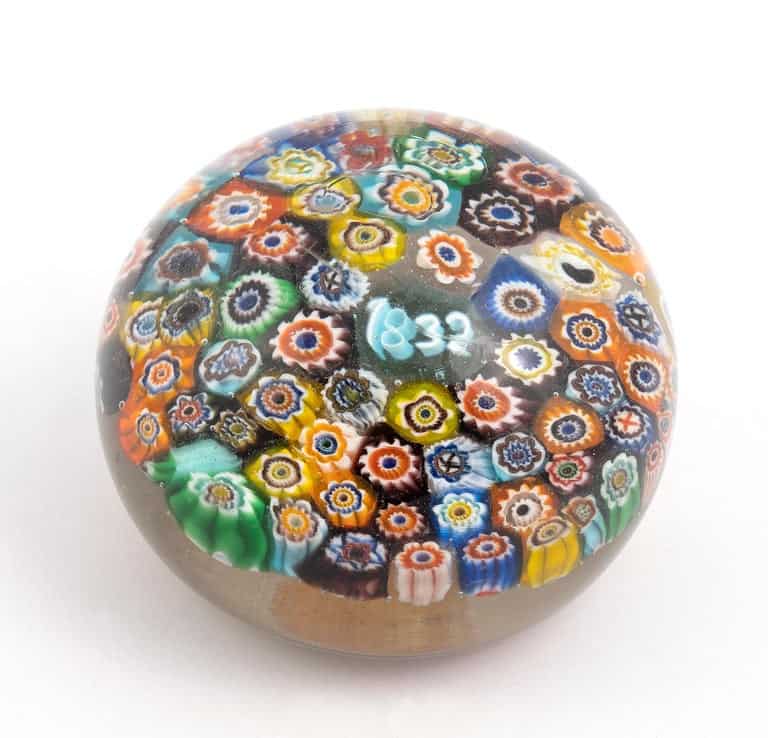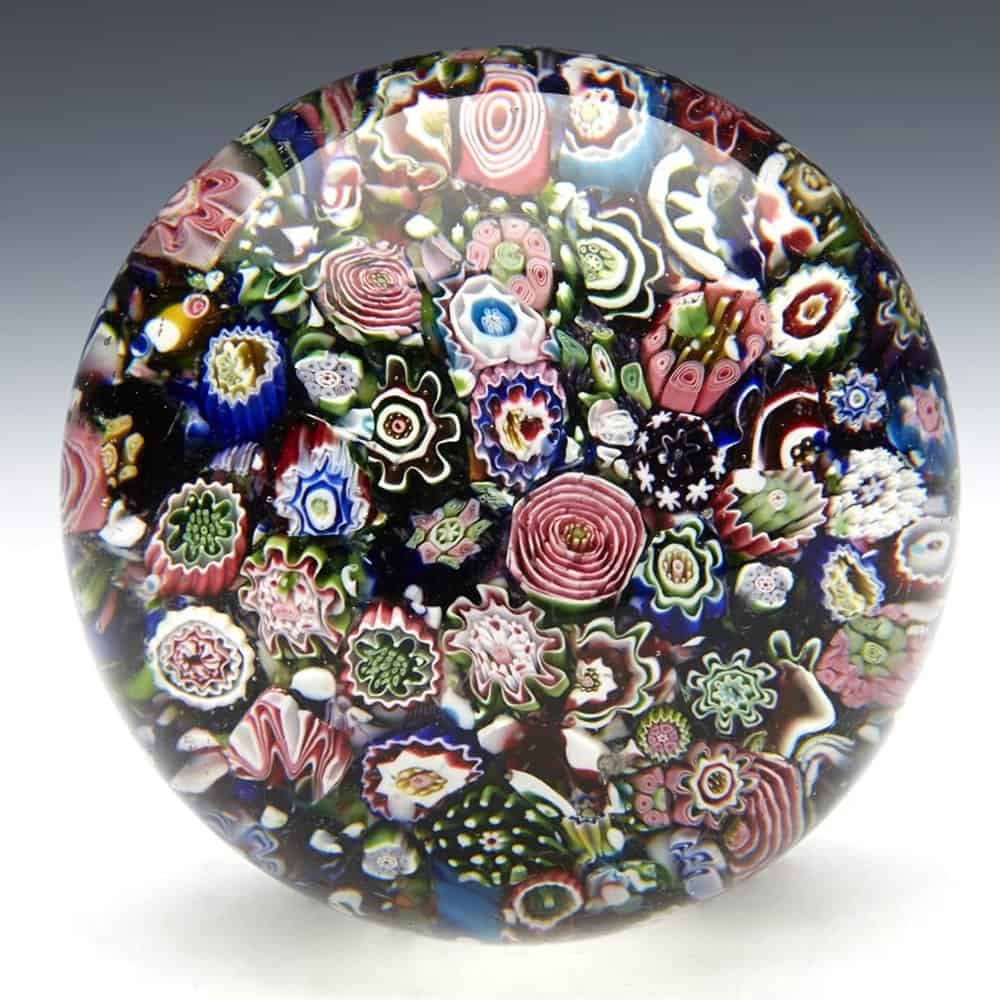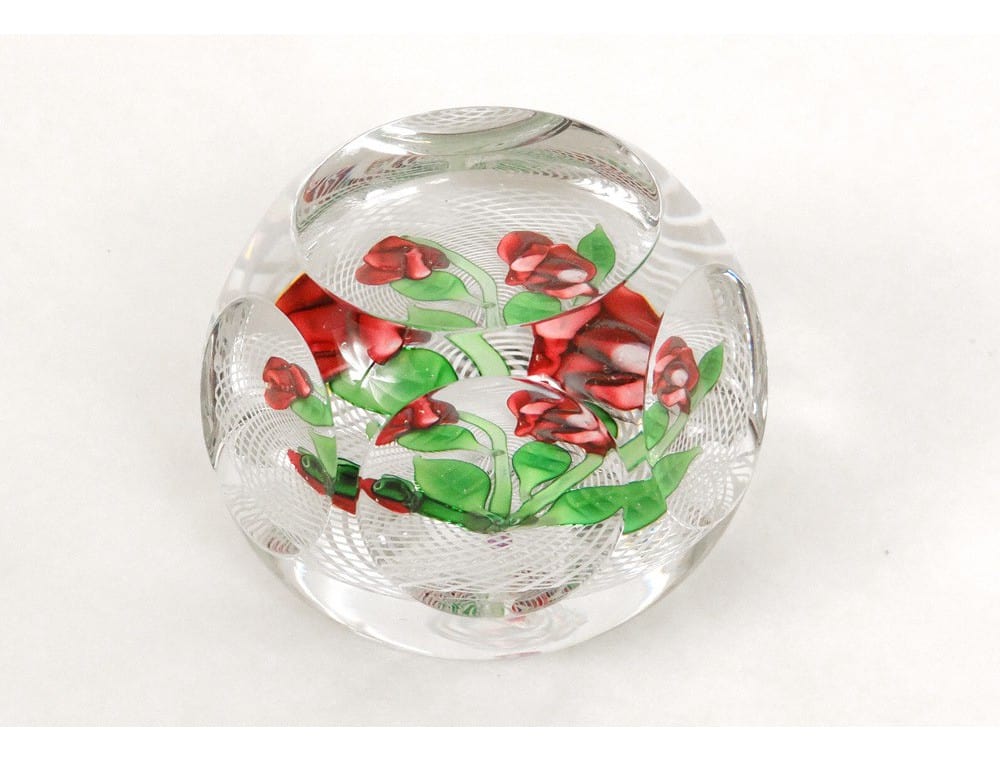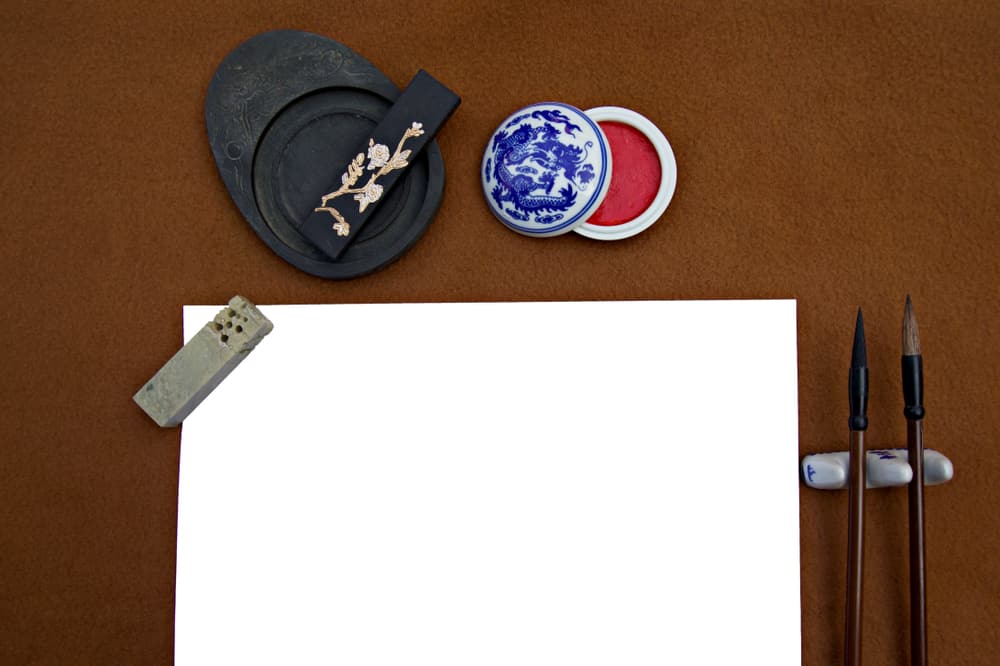Paperweights appear to have vanished from the face of the earth. Anyone bringing gorgeous crystal balls with the Eiffel Tower or floral arrangements inside from a business trip or holiday is no longer seen.
And it’s that the world has mostly abandoned letter-writing and paper in general in favor of digital files kept in a “cloud” that no one understands but that everyone utilizes without complaint.
If you show a paperweight to someone born after the year 2000, it’s possible they probably won’t know what it’s for or how it works. To be honest, paperweights no longer serve a functional purpose in today’s digital society, but they are growing in importance and curiosity among collectors.
Small works of art in a variety of materials and forms gain in value over time.
What is the best way to determine which pieces are the most valuable and collectible? How do you recognize them and ask for or pay a reasonable price for them? Paperweights are an excellent starting point if you’re interested in vintage collecting.
We want to give you all the information you need to get started in the interesting world of collecting or to get the most out of those ancient paperweights you received from your grandfather and have decided to sell in this post. Let’s get started!
Table of Contents
The history of paperweights
Objects that were designed with a merely functional purpose might often wind up being prized for their aesthetic appeal. It is at this point that they are valued for their aesthetic features rather than the original function for which they were created. This is how the paperweights ended up.
Paperweights first appeared at a time when incipient industrialization began to produce documents that occasionally stayed on tables, and thus were in danger of being lost.
It’s also worth remembering that there was no air conditioning in the offices back then, so the windows had to be opened. This resulted in drafts and papers flying all over the place, requiring the placement of some weight on the documents to keep them from flying away.
Paperweights began as simple objects, but by the middle of the nineteenth century, they had evolved into little works of beauty that adorned tables.
Even though it appears to have originated in Murano, Venetian workshops around 1840, three French makers swiftly dominated the market at the time. Baccarat, Saint Louis, and Clichy were all part of the classic period (1840-1880).
Collectors prize French paperweights from these periods, as the majority are in museums and only a few thousand are available for purchase.
Today, they may be found for as little as $100 for the simplest models and as much as thousands of dollars for the most desirable limited editions. There are also quite valuable English and American paperweights from this period, but you have to remind that the price changes due to how well conserved it is and if it has any internal flaws such as bubbles, chips, scratches, or any damage.
Antique Glass Paperweight Styles
Due to its popularity, glass paperweights were created in a range of styles, leaving us with a significant variation to be aware of before you start collecting or selling your vintage paperweights. These styles are considered Crown Jewels for collectors and specialized dealers.
Lampwork: These are typically well-designed pieces created by really creative artists. They shape glass into animal miniatures, insects, fruits, and flowers using a gas burner or torch. They are embalmed and placed in a glass dome in appealing shapes. They’re highly styled and lifelike paperweights.
Millefiori: This is a process that involves assembling cross-sections of little multicolored rods of crystals and various hues, heating them, and then separating them to create thin rods of various colors. These rods resemble flowers when viewed from the end and its required extreme precision for making them. it was invented by Venetian glassmakers.
Many of these flowers can be made by cutting these rods into pieces. After that, they are carefully held and the transparent glass dome is inserted, which increases the drawing. On one of the canes, they normally feature the year of manufacturing or the manufacturer’s initial letter.
Sulfur: They have a portrait plate in the form of a cameo covered inside the glass. The pieces are created with a ceramic that can recreate extremely fine features, giving them a realistic appearance. They were commonly used to honor a person or a significant event.
Swirl: The interior of the paperweight is adorned with swirls of multicolored opaque rods.
Californian: Colored molten glass is used to paint the dome, and the glass is frequently sprayed with metallic salts to give it a wonderful iridescent look.
Victorian: Portraits or advertisements used to be inside these Victorian paperweights. They were made in Pittsburgh, Pennsylvania, and William H. Maxwell copyrighted their technology in 1882. They were employed as promotional items since they reproduced photographs or advertisements on a milky glass disk.
Bohemian: These are ruby clear glass spheres that were particularly fashionable during the Victorian era.
What is the best way to tell if my paperweights are vintage?
We have to be honest and tell you that recognizing an old paperweight is one of the most difficult things you will ever do. If you are not an expert or have not studied books in a variety of styles, weights, and patterns extensively, determining their age or value at first glance will be quite difficult.
The answer of Jerry Gard, an accomplished collector of paperweights, to a newcomer on this issue can be disappointing. He claimed that at the very least, a handful of decent identification books were required. You must read them slowly and carefully until you comprehend them completely. This entails reading them a few times and flipping through them regularly, always examining the images.
When you have a paperweight in your hands, weigh it and then return to the books you’ve read to the portion that discusses that specific weight while inspecting the object with a magnifying glass.
Gard concludes by stating that if you are adept at memorizing patterns, shapes, and colors, you will only be able to name provenance, width, rarity, and weights after roughly eighty repetitions, allowing you to discern antique things from current ones.
Identifying the profile of old objects, in general, is a time-consuming process, therefore we recommend consulting a specialist if you believe you have something valuable on your hands or want to invest a significant amount of money in one of these items.
However, if you are interested in the subject or the trade, or if you simply want to learn about general culture, we propose a handful of books that you can review and begin studying.
LH and LP Selman’s Paperweights for Collectors and Paul Hollister’s Encyclopedia of Glass Paperweights You can begin your journey into the world of antique paperweights with these two publications.
The most famous paperweights
While the demand for paperweights grew in Europe, French producers raced to produce the greatest paperweights available; their quality was so good that museums and collectors recognized and valued them to this day.
Baccarat, Clichy, and Saint-Louis were the three makers who controlled the market and, as a result, created a trail that can be traced back to them.
Analyzing each of these firms and their unique manufacturing characteristics can assist you or at least provide you with another hint when it comes to recognizing vintage paperweights.
Paperweight Baccarat

The brightness of Baccarat paperweights is legendary. They are of excellent quality, and their designs have an unrivaled finish.
They did not limit themselves to making paperweights in the shape of spheres; they also emphasized innovation, designing pedestals, mushrooms, and faceted items. They worked extensively with the Venetian Millefiori style, recreating designs in the shape of swirls or loose filigree patterns.
The flower sticks on many Baccarat paperweights contain the date of manufacture or the manufacturer’s initials. They didn’t stop at floral designs, either; they also made paperweights with honeycomb patterns, butterflies, and concentric shapes.
These producers’ imaginations run wild, and you can see some patterns that are decades ahead of their time, including anemones, fruits, clover, insects, and a variety of creatures.
Paperweight Clichy

The internal sculptures of Clichy paperweights were known for their intricate designs and wide color palette. Her favorite designs were coiled ribbons, carpeted tuffs, and endless loops.
They used colorful glass threads that they heated and warmed-over lamps or live flames to get the desired appearance in all of their creations, which feature a variety of gorgeous hues and make highly accurate depictions of flowers.
Clichy and Baccarat both worked in the Venetian Millefiori style, which was popular in nineteenth-century France. Many Clichy paperweights have C-shaped scrolls with fruit or flower motifs around them.
Another way to spot a Clichy paperweight is to seek at the Clichy rose, which is made up of a single cane marked with the letter C and a very distinctive flower design that collectors can easily recognize.
It’s important to note that their work was elegant and delicate, as their designs were little but appeared larger because of the magnifying domes they employed for their paperweights.
Paperweight of Saint Louis

The third French firm to stand out for its superbly crafted paperweights is Saint-Louis. The dancing devils, sculpted in tiny cross-sections, and the dark yellow staffs are two of his most stunning designs. Beautiful crowns with alternating filigree and twisted glass canes are a specialty of hers. They used millefiori canes to create their designs, which were embellished with multicolored flowers and fruits and packed in vintage jewelry boxes.
Sulfur-style paperweights, which feature porcelain cameos as designs, were another of his specialties. They were used to memorialize important dates or people. They used existing designs for sculptures, medals, and coins to make their sculptures correct. Sulfur paperweights with images of animals or flowers are also available
Many factories in Belgium, Italy, England, Scotland, and Bohemia began to copy his ideas at Millefiori and Sulfur because they were so popular. George Bacchus & Sons, Apsley Pellatt, and Whitefriars are among the most well-known. Also, America made great samples due to European immigrants that brought this art form. Some of the most remarkable companies were the Boston and Sandwich Glass Company, Dorflinger, Mount Washington, and the New England Glass Company.
Do antique paperweights have a monetary value?
Paperweights are well-known and highly sought after by all types of collectors, from novices to experts, but the cost of high-quality pieces manufactured by a renowned manufacturer from centuries ago varies substantially. The first major auction of paperweights was a great exhibition conducted by Sotheby’s in 1925 but collectors still think that this form of art has not received proper recognition due to lack of exposure.
Even though paperweights no longer serve a use, they’re one of the few glass things that haven’t lost their value with time. Many other glass artifacts have lost value or have radically fluctuated in price, but paperweights have remained consistent in price and appear to do so in the future.
However, there must be a distinction established between truly old and collectible paperweights and those that were constructed recently. After WWII, paperweights became fashionable again, and many manufacturers began to produce them. There was a rebound in the market and the number of collectors increased after 1953 when the Paperweight Collectors Association was formed, but technology eventually pushed them aside, and they were forgotten when it came to functional usage.
However, the prices of all paperweights made in the twentieth century are far lower than the prices of the oldest paperweights made by some of the most recognized firms. While a vintage 1950s paperweight can be found for $100-200, immaculate condition Baccarat paperweights can cost up to $5,000.
As a result, most of the most valuable and desirable items are only available to collectors who have been in the game for a long time and know what they’re looking for.
However, this should not be disheartened, as other collectors like more common paperweights with unique or rare patterns, thereby offering up a wide range of options in the paperweight market.
What are the most valuable paperweights?
Below we will leave a list of a wide variety of paperweights, starting with the most expensive and luxurious and descending to cheaper and more accessible options for anyone who wants to start venturing into this market.
- An Antique St. Louis Ribbon Filigree and Millefiori Crown Paperweight c1850 — USD 3,090.55
- Primeros Paul Ysart Butterfly Lampwork Flower & Millefiori Garland Pisapapeles — USD 1,268.00
- GORGEOUS ANTIQUE ENGLISH CONCENTRIC MILLEFIORI MAGNUM PAPERWEIGHT – 3 5/8″ — US $895.00
- Faceted Glass Paperweight – Chinese Sulfur Birds on Tree — $85.00
The world of collectible paperweights is wide and brimming with possibilities. You can find everything from priceless artifacts for hundreds of dollars to paperweights that are still vintage but cost less than $100. As a result, if you’re interested in getting into this field, it’s an excellent place to start.
Keep in mind that they haven’t lost any worth over time, and the amount accessible is substantial. This implies that there is a market for all types of paperweights, and you can simply get into it.
You can also find vendors who will focus not only on vintage paperweights, but also on the models, colors, and patterns, regardless of whether they came from a reputable manufacturer or were made recently.
